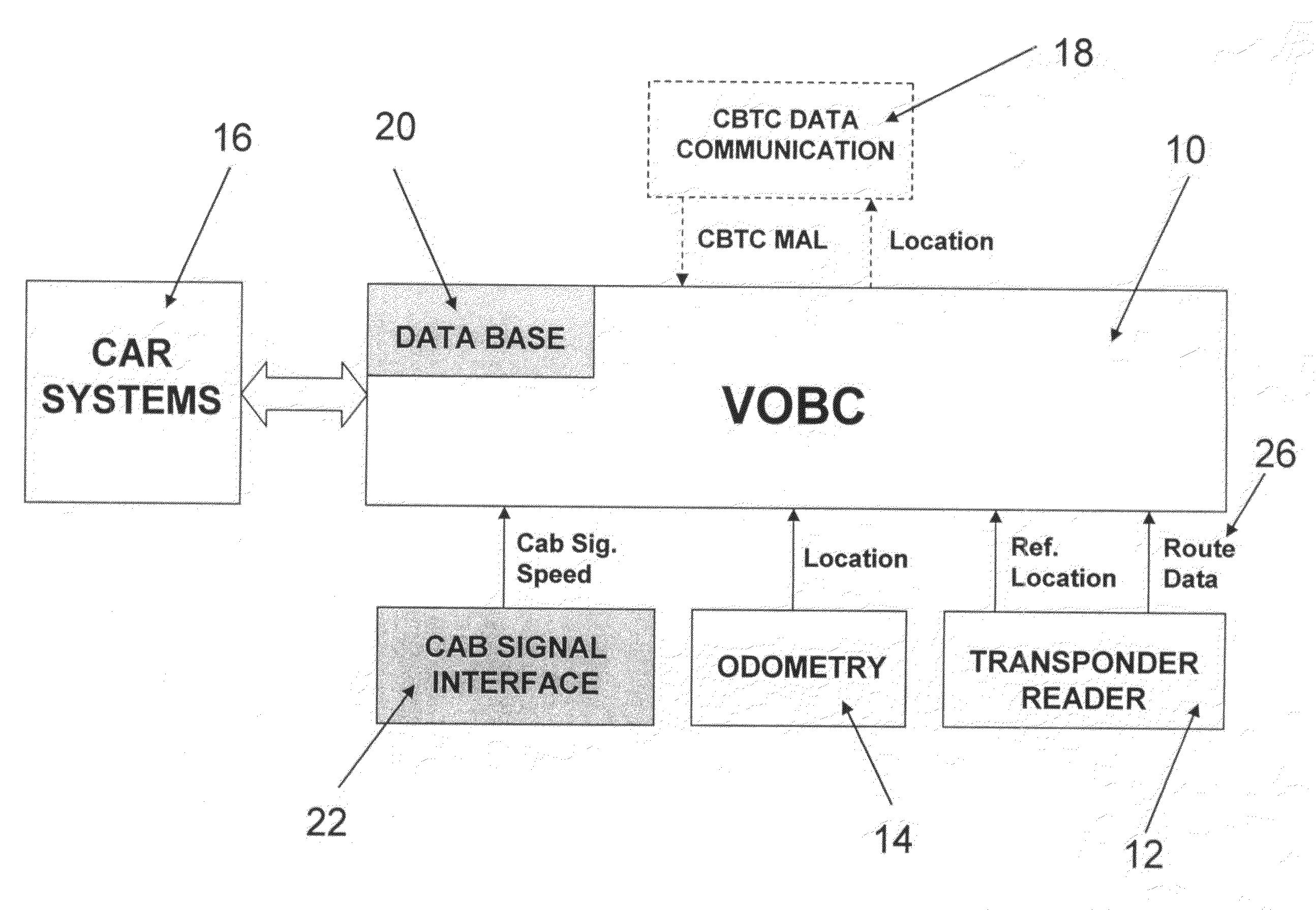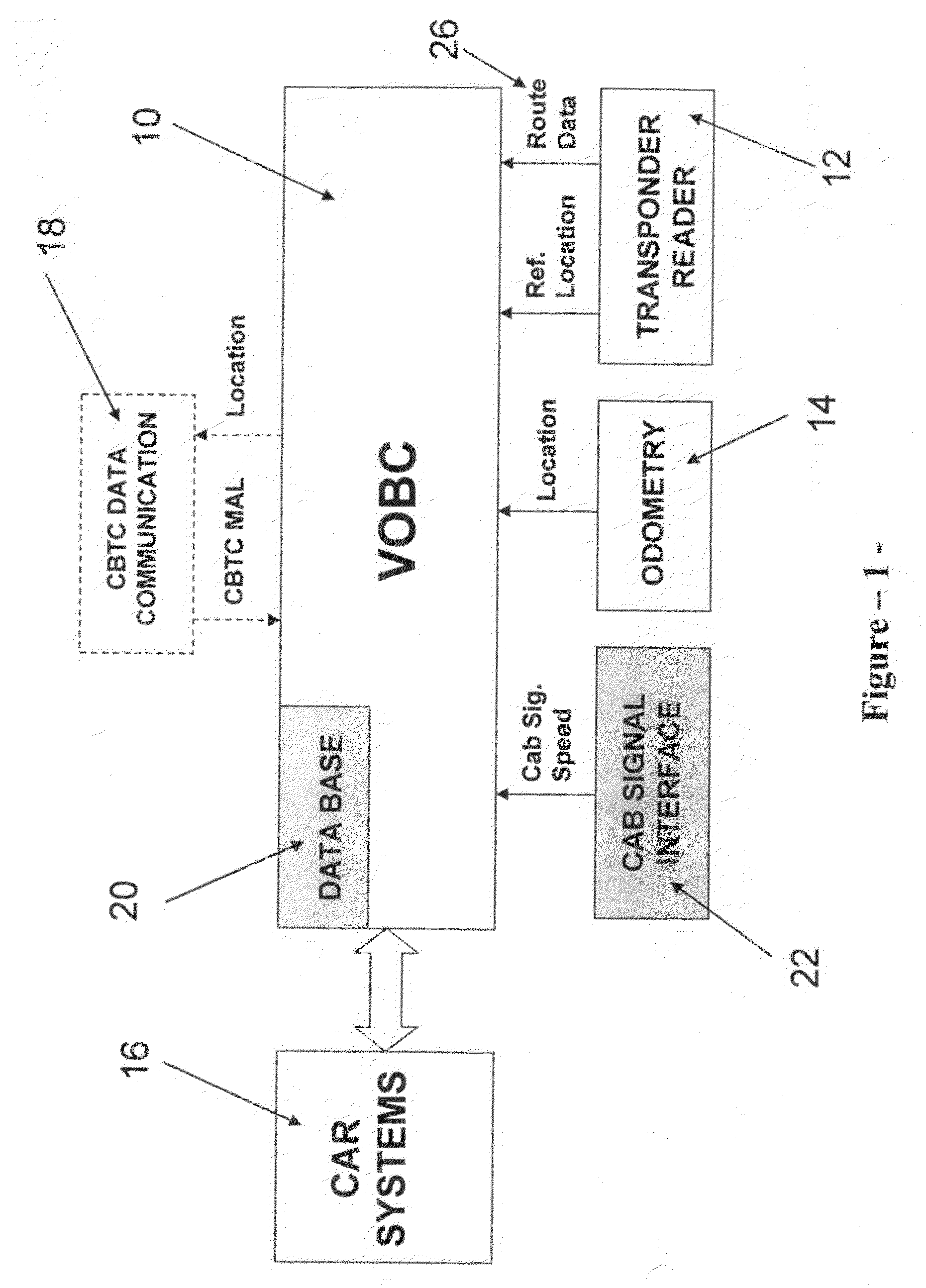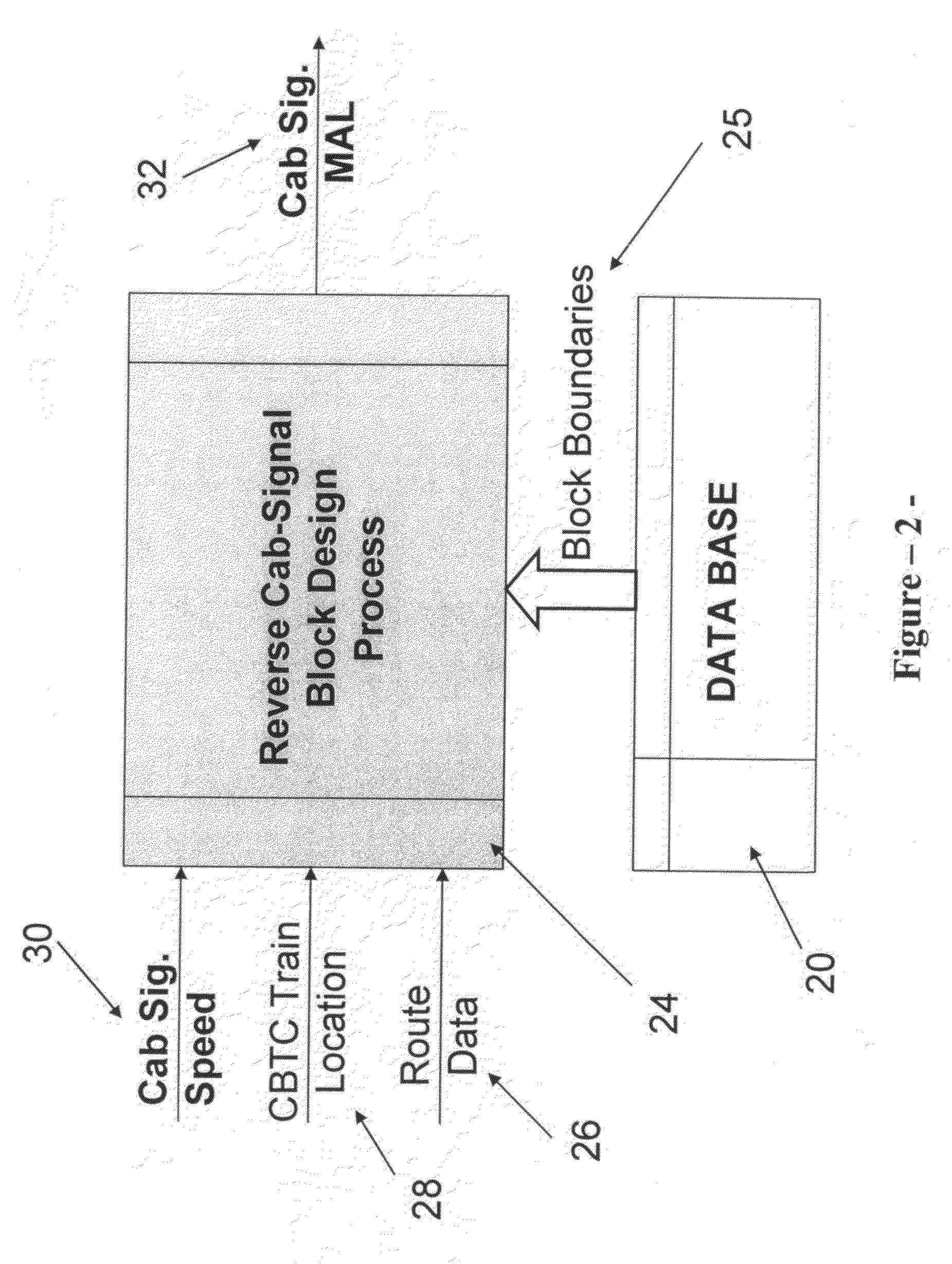Method & apparatus for hybrid train control device
a technology of hybrid trains and control devices, applied in the field of hybrid train control devices, can solve problems such as the difficulty of migrating cab-signaling installations to cbtc installations
- Summary
- Abstract
- Description
- Claims
- Application Information
AI Technical Summary
Benefits of technology
Problems solved by technology
Method used
Image
Examples
Embodiment Construction
[0056]The preferred embodiment of the present invention describes a structure, and / or a method to provide safe operation of trains over sections of cab-signaling track territory. The main concept of the present invention is to employ cab-signaling speed codes received from wayside cab-signaling devices to generate corresponding movement authority limits on board trains. In effect the structure used by the present invention is a hybrid architecture that combines wayside cab-signaling devices, and onboard CBTC controller.
[0057]The present invention maintains the running rails as an integral part of the train control system, while providing many of the advantages of CBTC operation. The preferred embodiment also employs a vital on-board data base that includes track topography information, cab-signaling block configuration, location of wayside signal devices, limits of station platforms, and civil speed limits. A cab-signaling pickup coil, together with a cab-signaling decoder, is used ...
PUM
 Login to View More
Login to View More Abstract
Description
Claims
Application Information
 Login to View More
Login to View More - R&D
- Intellectual Property
- Life Sciences
- Materials
- Tech Scout
- Unparalleled Data Quality
- Higher Quality Content
- 60% Fewer Hallucinations
Browse by: Latest US Patents, China's latest patents, Technical Efficacy Thesaurus, Application Domain, Technology Topic, Popular Technical Reports.
© 2025 PatSnap. All rights reserved.Legal|Privacy policy|Modern Slavery Act Transparency Statement|Sitemap|About US| Contact US: help@patsnap.com



